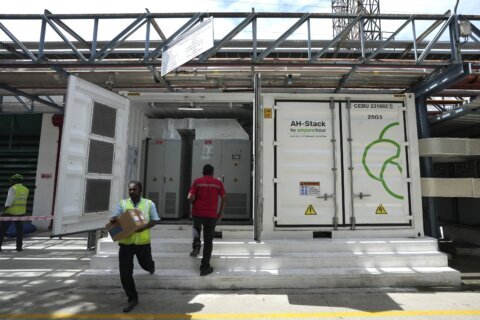Fireplaces can be a great way to heat your home and create a cozy ambiance. They can also be a serious fire hazard if not maintained properly.
Many homeowners don’t know what to do each year to ensure their fireplace is operating safely. Even individuals with fireplace experience may not fully grasp the potential risks that can accumulate over the years.
Following these five tips will help you reduce the chances of a fireplace-related fire in your home.
[READ: What to Know About Fireplace Installation.]
1. Inspect the Fireplace Regularly
It’s important to have your chimney, gas or electric fireplace inspected before use. This is especially critical if you are buying or renting a home with a fireplace and don’t know whether the previous homeowners or tenants took care of it properly.
“You should have your fireplace inspected annually,” says Dale Terry, owner of Crossroads Insurance Recovery Advocates and emergency service district commissioner in Houston. “Professionals can identify if there are bigger issues like a crack in the flue or to determine if there is creosote buildup, which is the most common cause of fireplace fires.”
Creosote is a sticky chemical that gets released when wood is burned. It is highly flammable and builds up on the flue, says Terry.
If you buy or rent a home with a fireplace, have it inspected before using it. Most chimney sweep companies can inspect and clean or repair your chimney as needed. Rates for a fireplace inspection vary by company and location, but it can cost just under $100 for an inspection and up to $500 for an inspection and cleaning.
2. Clean Your Flue Based On Use
Many experts will recommend an annual cleaning of your fireplace flue, the duct vent inside the chimney. However, it really should be determined by your use, says Andy Apostolopoulos, owner of Fred’s Chimney Magic in Long Island, New York. “Chimneys should be swept, cleaned and inspected at least once every cord of wood burned,” Apostolopoulos says.
For occasional fireplace users, it could be two or three years before you need an inspection and cleaning. More frequent fireplace users may need to do it once or twice a year.
Terry doesn’t recommend cleaning your flue yourself, although you can. “There are logs you can buy that help break down the creosote,” he says. “But it’s best to hire a professional. Getting up the chimney is difficult, plus most people don’t have the necessary tools to clean it.”
Make sure you are cleaning all flues in your home. Many people assume they only have one flue because they only have one fireplace, but that may not be the case, Apostolopoulos says.
“If you see two flues coming out of the top of your roof, but you only have one fireplace in the home, more than likely, the other flue is for your boiler system,” he says. “That flue should be checked and cleaned annually, especially for an oil burner boiler because the oily nature of it can cause blockages much faster.”
[Can You Build a Fireproof Home?]
3. Ensure the Chimney Has No Leaks or Cracks
Cleaning is just one part of preventative maintenance. Cracking between the flue lining or chimney can be a major fire hazard and can happen from things like flooding, extreme weather or the house settling.
If your house has ever flooded, you will want to replace your firebox. The water can enter the wood that supports the chimney, causing it to shift or expand, which can cause cracks.
“If the stack shifts, it can open a crack in the flue,” Terry says. “Embers can go into the structure, causing a fire that way. You can’t really see this unless you’re inspecting the attic. So, if you suspect there has been foundational movement, you want to get your fireplace inspected.”
4. Use the Right Wood
If you have a wood-burning fireplace, you need to use the right wood. Hardwoods are a better choice than pine because they are less oily. Pine cracks and pops, which can send embers all over the place. The oil in wood can also lead to rapid creosote buildup in the flue.
Generally speaking, electric and gas-burning fireplaces require a lot less maintenance because they don’t use a traditional chimney to exhaust smoke. If you want to avoid a lot of maintenance and fire hazards, have a gas or electric fireplace installed.
Howevere, electrical or gas fireplaces are fairly expensive to install and will require additional utilities like a gas connection to operate. They also require regular inspection, particularly gas fireplaces. This includes a complete inspection of all system components, including the pilot light, fan, venting system and thermostat. You should also clean and replace gas logs as needed and clean any air filters in your electric fireplace annually.
[What Is Radiant Heat? Pros, Cons and Costs (2023)]
5. Ensure No Wildlife Can Get In
If you hear birds in your chimney or fireplace, there’s a good chance they are blocking the flue with their nest. Blockage sends smoke, and also very dangerous carbon monoxide, back into the living space.
“Your chimney should have a chimney guard to prevent critters from getting inside and making themselves comfortable, which can create a blockage, which can also create a chimney fire,” says Terry. An inspection can identify whether a chimney guard is in place or if there are any entry areas birds or other animals may find their way into.
Using these preventive measures will ensure you are not overlooking any potential issues and have a safe and operable fireplace. The peace of mind will let you enjoy your cozy fires in the cold weather months.
More from U.S. News
Reclaimed Wood Is Trending for Its Eco-Friendly Charm and Warmth
5 Things to Know About Buying a Home in a Flood Zone
5 Fireplace Safety Tips Every Homeowner Should Know originally appeared on usnews.com







